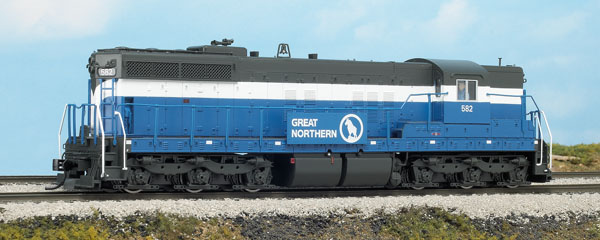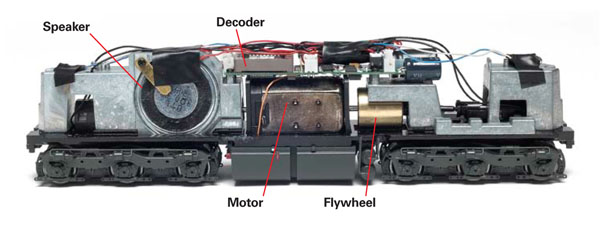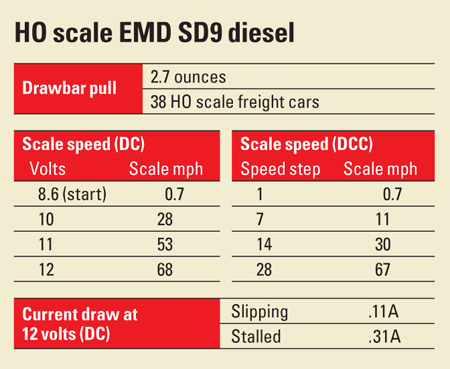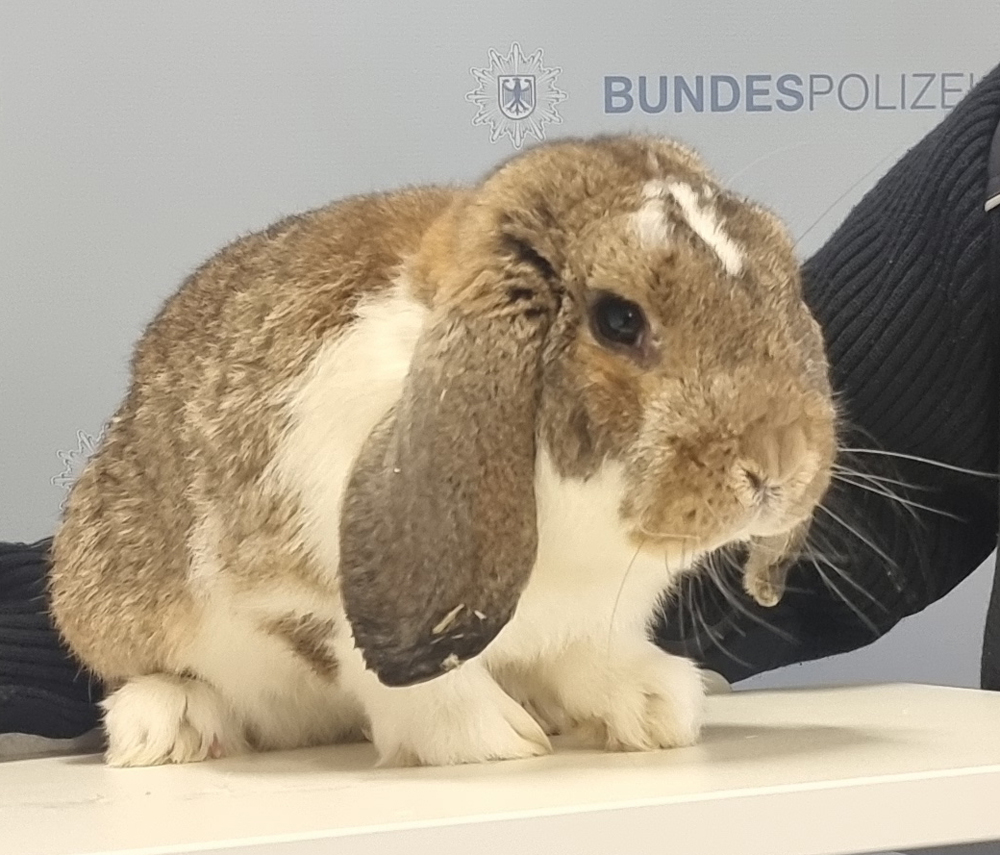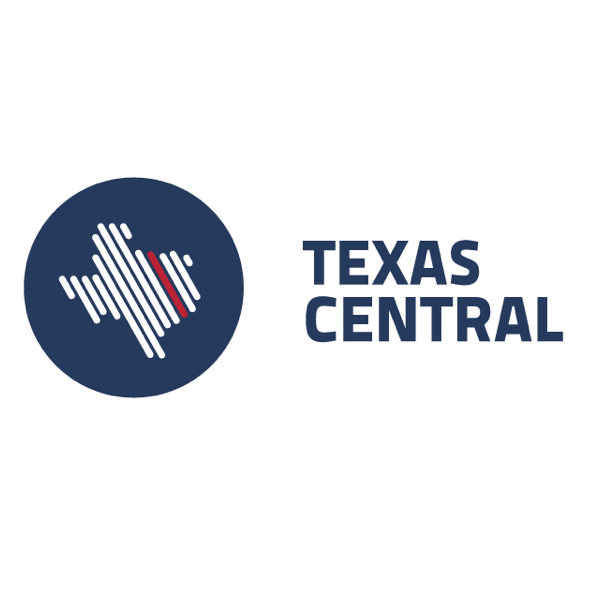Electro-Motive Division produced the SD9 from January 1954 through June 1959. During that time, 471 units were built. The 1,750-hp locomotive had a 16-cylinder 567C engine and was offered with or without dynamic brakes and steam generator equipment.
Our sample is decorated in Great Northern’s Big Sky Blue scheme. Engine no. 582 was one of seven SD9s painted in this scheme, used from 1967 until the Burlington Northern merger in 1970. The full-size engine was set up to run long-hood forward.
The WalthersProto version of the SD9 features upgrades from the original model, released by Life-Like in the 1990s. The model has wire grab irons and eyebolts, Proto-Max metal knuckle couplers, and railroad-specific details. The acetal plastic handrails are molded in Big Sky Blue to match the body color.
There are small holes on opposite corners of the cab roof. This dates to the Life-Like version of the model, which had positionable cab doors. On the Walthers version, the doors are molded shut.
The model has separate plastic placards with GREAT NORTHERN lettering and the Rocky herald. The bolts on the placard are correctly spaced to suggest the sign is attached to two brackets that were perpendicular to the stanchions, like they were on the prototype.
I compared no. 582 to a photo of the prototype in Joseph W. Shine’s Great Northern Color Pictorial: Vol. 2 (Four Ways West Publications, 1993). Many of the details matched the prototype, including footboard pilots, a nail-type antenna, and a rear-facing horn on the winterization hatch. The grab irons above the classification lights were omitted.
The paint is smooth and evenly applied. Under close examination, there is a bit of overspray at the top and bottom of the white stripe. The ladders are solid blue, which is correct for the rear but not the front. They should be painted to match the colors of the long hood.
The model’s major dimensions closely match prototype drawings in the 1956 Locomotive Cyclopedia of American Practice (Simmons-Boardman Publishing Corp.). To lift off the plastic body shell, I removed the draft-gear boxes and two screws behind the fuel tank.
Our sample has a QSI Quantum dual-mode DCC sound decoder. Walthers recently announced a new run of SD9s in different road names that will be offered with a SoundTraxx DCC sound decoder.
I first tested our unit in DC with a Model Rectifier Corp. Tech 4 power pack. The sounds came on at 5 volts (V), and the locomotive started moving at a scale 0.7 mph at 8.6V. The SD9 achieved a top speed of 68 scale mph at 12V, which is within the prototype’s speed range. The locomotive can pull 38 free-rolling cars on straight and level track.
The SD9 was a workhorse for more than a dozen railroads, and many can still be found in service today on regional railroads, short lines, and at various industries. The WalthersProto model accurately captures the lines of the six-axle diesel.
Manufacturer
Wm. K. Walthers Inc.
P.O. Box 3039
Milwaukee, WI 53201
www.walthers.com
Road names: Great Northern (Big Sky Blue), Burlington Northern, Chessie System (Baltimore & Ohio reporting marks), and Denver & Rio Grande Western. Two road numbers per scheme.
Era: 1954 to present
Features
- Correctly gauged wheelsets
- Five-pole skew-wound can motor
- Light-emitting diode headlights
- Modeler-installed details
- Weight: 15.6 ounces





